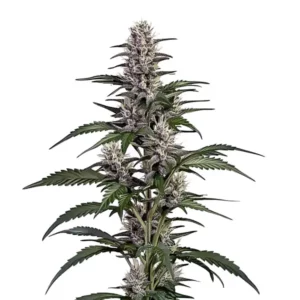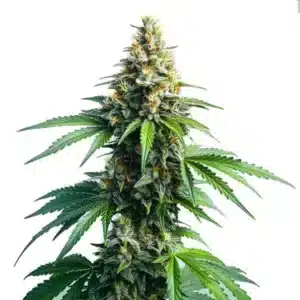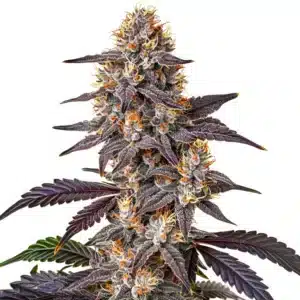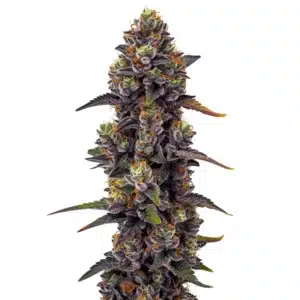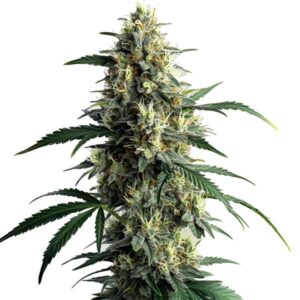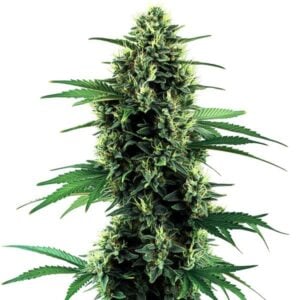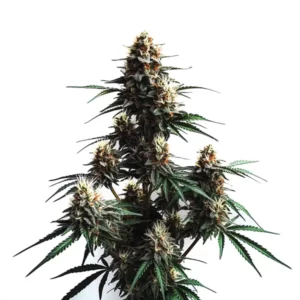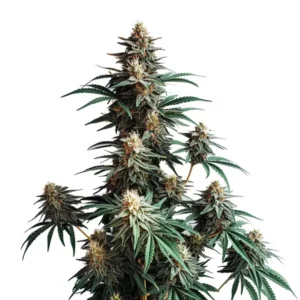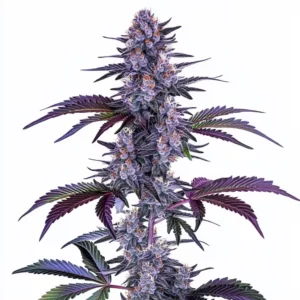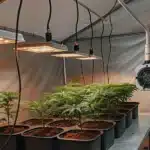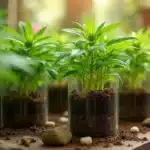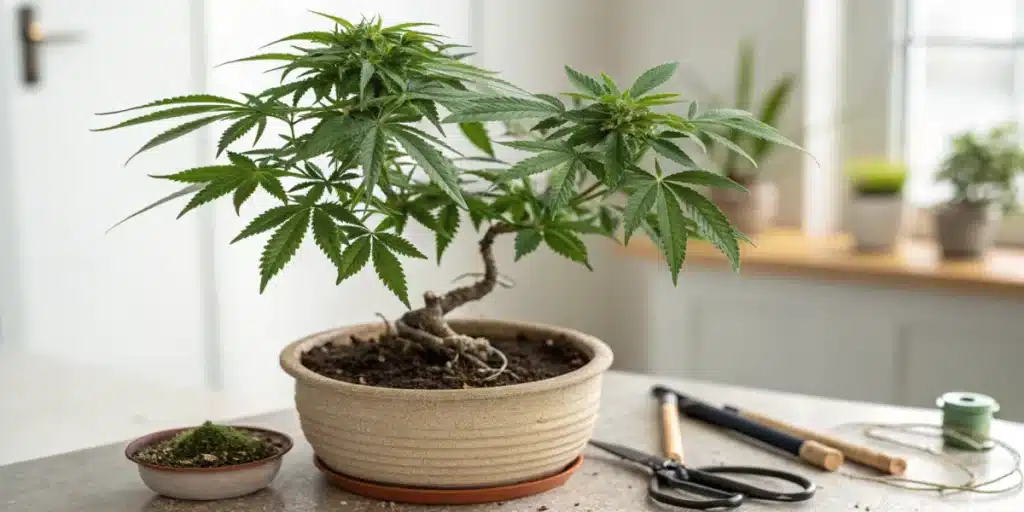
Bonsai Cannabis Plants: A Unique Way to Grow
Bonsai cannabis plants present a fascinating opportunity for growers who are interested in cultivating marijuana in a compact and visually appealing way. This method merges the ancient art of bonsai with modern cannabis cultivation techniques, leading to beautifully shaped, miniature weed plants that are not only space-efficient but also highly functional. Whether for practical purposes such as maintaining mother plants and producing clones, or simply for their aesthetic appeal, this plants have become an increasingly popular choice among cannabis enthusiasts.
What Are Bonsai Cannabis Plants?
Bonsai marijuana plants are miniature versions of standard marijuana plants that have been carefully trained and pruned to maintain a compact form. This meticulous cultivation process allows growers to create stunning, small-scale plants that fit into confined spaces while still producing quality buds. Beyond their decorative value, bonsai cannabis plants can serve a variety of purposes, including preserving genetics, minimizing space requirements, and maintaining an ongoing supply of clones.
Recommended Strains
Afghan Autoflower
|
|
THC | 15% - 17% (Medium) |
|
|
Type | Autoflowering |
|
|
Yield | Medium |
|
|
Phenotype | 90% Indica / 10% Sativa |
Afghan Kush
|
|
THC | 16% - 21% (Medium) |
|
|
Type | Feminized |
|
|
Yield | Medium |
|
|
Phenotype | 90% Indica / 10% Sativa |
Unlike traditional cannabis plants, which can quickly outgrow their environment, this plants are meticulously managed to ensure they remain small and productive. With careful attention to pruning, training, and root management, growers can enjoy healthy, long-lasting plants that provide both visual enjoyment and practical benefits.
Promos & Deals
History and Cultural Influence of Bonsai Cannabis Plants
The art of bonsai originated in China over a thousand years ago and was later refined in Japan, where it became an integral part of Zen philosophy and artistic expression. The principles of bonsai focus on harmony, patience, and attention to detail qualities that have seamlessly translated into the cultivation of cannabis plants. The application of bonsai techniques to cannabis cultivation emerged in the late 20th century as growers sought ways to maintain mother plants and experiment with aesthetic growing styles. Today, bonsai cannabis plants symbolize both a nod to ancient horticultural traditions and a modern, sustainable approach to home cultivation.
Beyond its practical uses, this plants have also become a cultural statement. In an era where sustainable living and self-sufficiency are increasingly valued, bonsai cannabis allows enthusiasts to enjoy cannabis cultivation in a way that aligns with eco-conscious values. The practice also highlights the versatility of cannabis as a plant that can thrive under carefully managed conditions, embodying a fusion of artistry and science.
Best Cannabis Strains for Bonsai Cultivation
Choosing the right strain is essential when growing bonsai cannabis plants. Some strains naturally lend themselves better to the bonsai technique due to their growth patterns and structural characteristics, making them ideal for cultivating a bonsai weed strain. Indica-dominant strains, known for their short, bushy stature and dense foliage, are particularly well-suited for bonsai training.
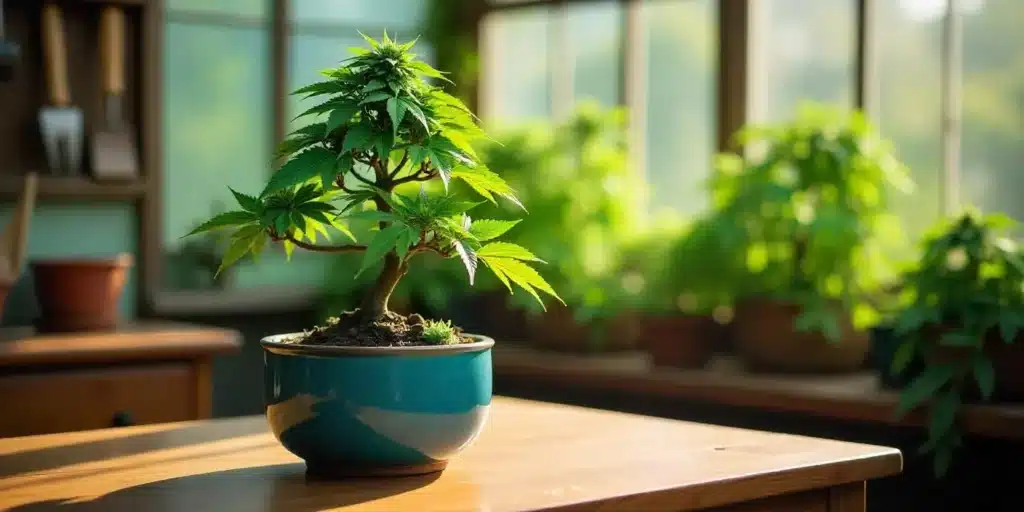
Top 5 Strains for Bonsai Cannabis Cultivation
- Northern Lights:
- A classic indica strain known for its compact growth, resinous buds, and relaxing effects. Its dense foliage makes it an ideal candidate for bonsai cultivation.
- Blueberry:
- This indica-dominant hybrid offers a fruity aroma, tight node spacing, and a robust structure that responds well to pruning and training.
- Afghan Kush:
- A pure indica strain with a sturdy structure and high resistance to stress, making it perfect for maintaining a bonsai cannabis plant over extended periods.
- Jack Herer:
- Despite being a sativa-dominant strain, its controlled growth pattern under training techniques makes it a unique bonsai candidate with a balanced cannabinoid profile.
- White Widow:
- A balanced hybrid with strong branching and a forgiving nature for pruning, making it an excellent choice for first-time bonsai cannabis growers.
Getting Started with Bonsai Cannabis Plants
Embarking on the journey of cultivating bonsai cannabis plants requires patience, dedication, and a keen eye for detail. The first step is choosing the right strain, as not all cannabis varieties respond equally well to bonsai training techniques. Indica-dominant strains are often the preferred choice, as they naturally exhibit a more compact growth pattern and dense foliage, making them easier to shape and maintain.
Once the strain has been selected, the next step is to gather the necessary tools for successful bonsai training. Essential tools include sharp pruning scissors to ensure clean cuts, bonsai wire to gently shape branches, a well-draining pot to support root health, and nutrient-rich soil to provide essential nourishment. Investing in high-quality tools and materials from the start can make a significant difference in the plant’s overall health and appearance.
Techniques for Training Bonsai Cannabis Plants
The process of shaping bonsai cannabis plants involves a combination of pruning, wiring, and root management. Each technique plays a vital role in achieving the desired aesthetic and maintaining the plant’s health over time.
Pruning is one of the most important aspects of bonsai cannabis cultivation. By regularly trimming away excess leaves and branches, growers can encourage bushy, lateral growth while preventing the plant from becoming too tall or unmanageable. Proper pruning also enhances airflow and light penetration, both of which are essential for healthy development.
Wiring is another crucial technique used to shape bonsai cannabis plants. By carefully wrapping soft wire around the branches, growers can gently guide the plant’s growth in a specific direction, creating a visually pleasing structure. This process requires patience and precision, as over-tightening the wire can damage the plant.
Root pruning is equally important in maintaining the compact size of this plants. Periodic trimming of the roots prevents the plant from becoming root-bound and allows it to continue thriving in a small container. Regular root maintenance also helps in nutrient absorption and overall plant vitality.
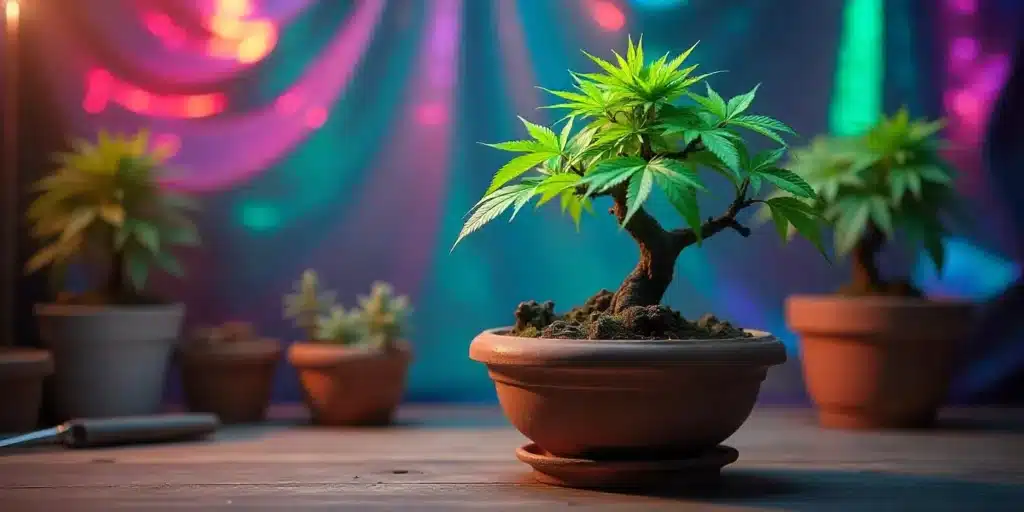
Step-by-Step Guide to Creating Your First Bonsai Cannabis Plant
Creating a bonsai cannabis plant requires dedication, patience, and careful execution. Follow these expanded steps to achieve a successful result:
- Select Your Cannabis Strain:
- Opt for strains with a naturally compact growth habit. Indica-dominant strains typically respond better to bonsai techniques.
- Prepare Your Container:
- Use a small, well-draining pot that can accommodate gradual root trimming while promoting proper aeration.
- Initial Training:
- Begin shaping the plant early by gently bending and wiring the main stem and side branches to encourage horizontal growth. Start with soft ties to avoid damaging young stems.
- Regular Pruning:
- Trim excess leaves and shoots weekly to maintain shape and optimize airflow. Always use sterilized scissors to prevent infections.
- Root Pruning:
- Every few months, remove the plant from the pot and trim the roots to prevent excessive growth. This step ensures nutrient efficiency and longevity.
- Watering and Feeding:
- Water sparingly to prevent overhydration. Utilize a balanced nutrient mix with reduced nitrogen content to control excessive growth spurts.
- Ongoing Maintenance:
- Adjust branch positioning as the plant matures, and continually refine the structure by selective trimming and reshaping.
- Pest and Disease Control:
- Monitor the plant regularly for signs of pests or diseases. Use organic methods like neem oil or beneficial insects to maintain plant health.
By following these steps with patience and consistency, you can achieve a beautifully structured bonsai cannabis plant that thrives in a small space.
Benefits of Growing
There are numerous benefits to cultivating bonsai cannabis plants, making them an attractive option for both novice and experienced growers. One of the most obvious advantages is the efficient use of space. For individuals living in apartments or those with limited growing areas, this plants offer a practical solution that does not compromise on quality.
Another significant benefit is the low maintenance requirements. Once a bonsai cannabis plant is properly trained and established, it requires relatively minimal care compared to full-sized plants. This makes them an ideal choice for growers who have busy schedules but still want to enjoy the pleasures of cannabis cultivation.
Bonsai cannabis plants are also an excellent option for maintaining mother plants. Because of their small size and controlled growth, they can be kept for extended periods without taking up too much room, providing a continuous source of healthy clones for future grows.
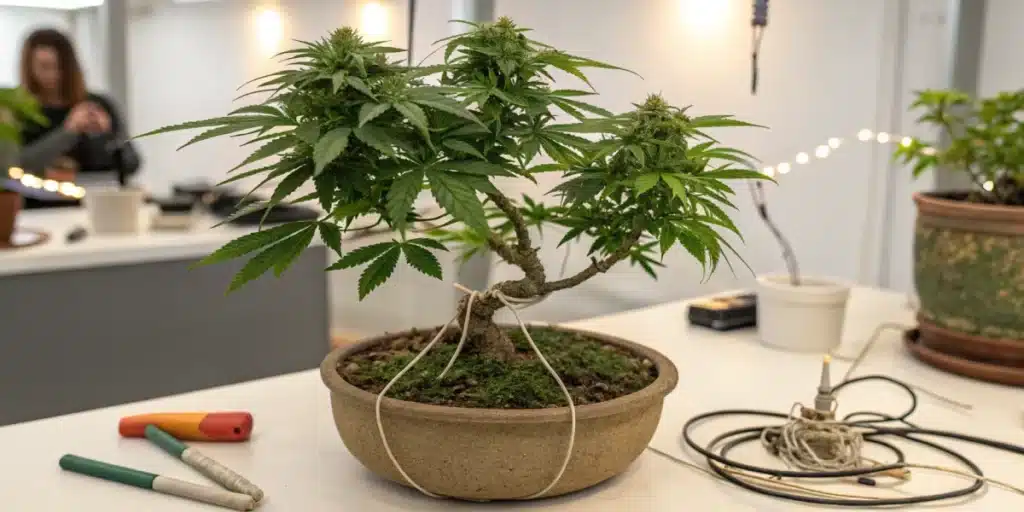
Overcoming Challenges
While the rewards of growing bonsai cannabis plants are many, there are also challenges that growers must navigate. One common issue is preventing overgrowth. Without regular pruning and maintenance, even a bonsai cannabis plant can become too large for its intended space. Staying on top of trimming schedules is key to maintaining the desired size and shape.
Another challenge involves nutrient management. Due to their smaller size, this plants require careful monitoring of nutrient intake to avoid overfeeding, which can lead to nutrient burn, or underfeeding, which can stunt growth. A balanced and consistent feeding schedule is essential for optimal plant health.
Pest control is also an important consideration, as the dense foliage of bonsai cannabis plants can create an inviting environment for pests such as spider mites and aphids. Regular inspections and the use of organic pest control methods can help prevent infestations and keep the plant healthy.
Creating the Ideal Environment for Bonsai Cannabis Plants
Providing the right environmental conditions is essential for the successful growth of bonsai cannabis plants. Proper lighting is particularly important, as it influences the plant’s overall health and development. LED grow lights with adjustable intensity are a popular choice, as they allow growers to tailor the lighting to suit the specific needs of the plant without causing excessive stretching.
Temperature and humidity levels must also be carefully regulated. The ideal temperature range for this plants is between 68-77°F (20-25°C), with humidity levels kept around 50-60% to prevent mold and mildew issues. Maintaining a stable environment helps ensure the plant remains healthy and productive.
Long-Term Maintenance and Care
With proper care, bonsai cannabis plants can continue thriving for years, providing a steady supply of clones and visual enjoyment. Routine tasks such as pruning, root trimming, and consistent watering are all essential to ensuring the plant’s longevity.
Harvesting bonsai cannabis plants requires a careful approach to avoid damaging the plant’s structure. Using sharp, sterilized tools, growers can trim the buds while leaving the rest of the plant intact for continued growth. This allows the plant to be used repeatedly without sacrificing quality.
FAQs
How long does it take to grow a bonsai cannabis plant?
The timeline can vary based on the strain and care provided, but it typically takes 3-6 months to establish a mature bonsai cannabis plant.
Can bonsai cannabis plants produce usable buds?
Yes, they can produce buds, but yields will be lower compared to standard plants. The primary goal is often aesthetics and maintaining mother plants.
Is it legal to grow this plants?
Cannabis laws vary by region. Always check local regulations before starting any cannabis cultivation.
How often should I prune my bonsai cannabis plant?
Regular pruning should be done every 1-2 weeks to maintain shape and prevent overgrowth.
What type of lighting is best for bonsai cannabis plants?
LED grow lights with adjustable intensity are ideal for providing the right light spectrum without excessive heat.


